Roman M. Wittig
The PanAf-FGBG Dataset: Understanding the Impact of Backgrounds in Wildlife Behaviour Recognition
Feb 28, 2025Abstract:Computer vision analysis of camera trap video footage is essential for wildlife conservation, as captured behaviours offer some of the earliest indicators of changes in population health. Recently, several high-impact animal behaviour datasets and methods have been introduced to encourage their use; however, the role of behaviour-correlated background information and its significant effect on out-of-distribution generalisation remain unexplored. In response, we present the PanAf-FGBG dataset, featuring 20 hours of wild chimpanzee behaviours, recorded at over 350 individual camera locations. Uniquely, it pairs every video with a chimpanzee (referred to as a foreground video) with a corresponding background video (with no chimpanzee) from the same camera location. We present two views of the dataset: one with overlapping camera locations and one with disjoint locations. This setup enables, for the first time, direct evaluation of in-distribution and out-of-distribution conditions, and for the impact of backgrounds on behaviour recognition models to be quantified. All clips come with rich behavioural annotations and metadata including unique camera IDs and detailed textual scene descriptions. Additionally, we establish several baselines and present a highly effective latent-space normalisation technique that boosts out-of-distribution performance by +5.42% mAP for convolutional and +3.75% mAP for transformer-based models. Finally, we provide an in-depth analysis on the role of backgrounds in out-of-distribution behaviour recognition, including the so far unexplored impact of background durations (i.e., the count of background frames within foreground videos).
PanAf20K: A Large Video Dataset for Wild Ape Detection and Behaviour Recognition
Jan 31, 2024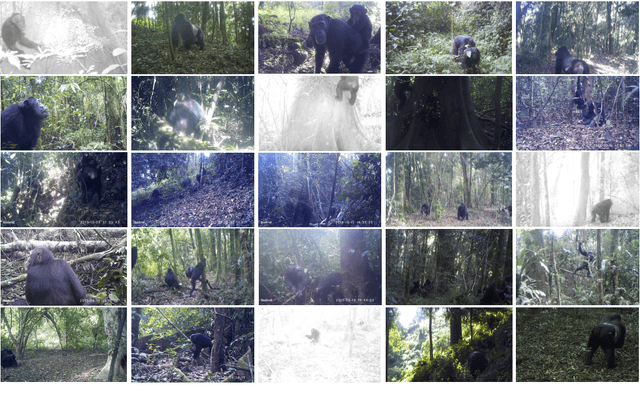
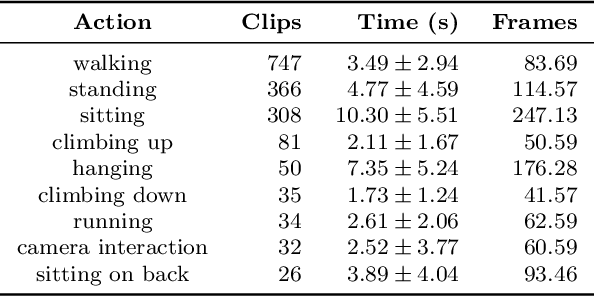
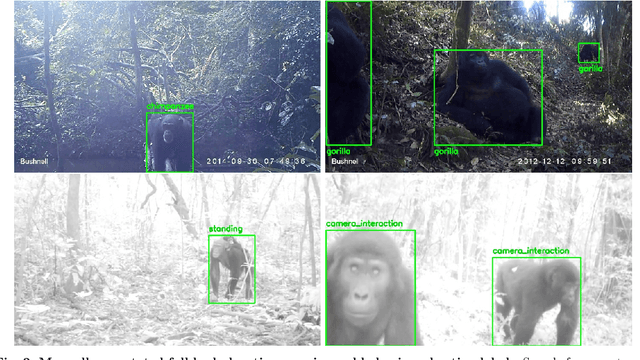

Abstract:We present the PanAf20K dataset, the largest and most diverse open-access annotated video dataset of great apes in their natural environment. It comprises more than 7 million frames across ~20,000 camera trap videos of chimpanzees and gorillas collected at 14 field sites in tropical Africa as part of the Pan African Programme: The Cultured Chimpanzee. The footage is accompanied by a rich set of annotations and benchmarks making it suitable for training and testing a variety of challenging and ecologically important computer vision tasks including ape detection and behaviour recognition. Furthering AI analysis of camera trap information is critical given the International Union for Conservation of Nature now lists all species in the great ape family as either Endangered or Critically Endangered. We hope the dataset can form a solid basis for engagement of the AI community to improve performance, efficiency, and result interpretation in order to support assessments of great ape presence, abundance, distribution, and behaviour and thereby aid conservation efforts.
Chaos and COSMOS -- Considerations on QSM methods with multiple and single orientations and effects from local anisotropy
Sep 30, 2023Abstract:Purpose: Field-to-susceptibility inversion in quantitative susceptibility mapping (QSM) is ill-posed and needs numerical stabilization through either regularization or oversampling by acquiring data at three or more object orientations. Calculation Of Susceptibility through Multiple Orientations Sampling (COSMOS) is an established oversampling approach and regarded as QSM gold standard. It achieves a well-conditioned inverse problem, requiring rotations by 0{\deg}, 60{\deg} and 120{\deg} in the yz-plane. However, this is impractical in vivo, where head rotations are typically restricted to a range of +-25{\deg}. Non-ideal sampling degrades the conditioning with residual streaking artifacts whose mitigation needs further regularization. Moreover, susceptibility anisotropy in white matter is not considered in the COSMOS model, which may introduce additional bias. The current work presents a thorough investigation of these effects in primate brain. Methods: Gradient-recalled echo (GRE) data of an entire fixed chimpanzee brain were acquired at 7 T (350 microns resolution, 10 orientations) including ideal COSMOS sampling and realistic rotations in vivo. Comparisons of the results included ideal COSMOS, in-vivo feasible acquisitions with 3-8 orientations and single-orientation iLSQR QSM. Results: In-vivo feasible and optimal COSMOS yielded high-quality susceptibility maps with increased SNR resulting from averaging multiple acquisitions. COSMOS reconstructions from non-ideal rotations about a single axis required additional L2-regularization to mitigate residual streaking artifacts. Conclusion: In view of unconsidered anisotropy effects, added complexity of the reconstruction, and the general challenge of multi-orientation acquisitions, advantages of sub-optimal COSMOS schemes over regularized single-orientation QSM appear limited in in-vivo settings.
Automatic Individual Identification of Patterned Solitary Species Based on Unlabeled Video Data
Apr 19, 2023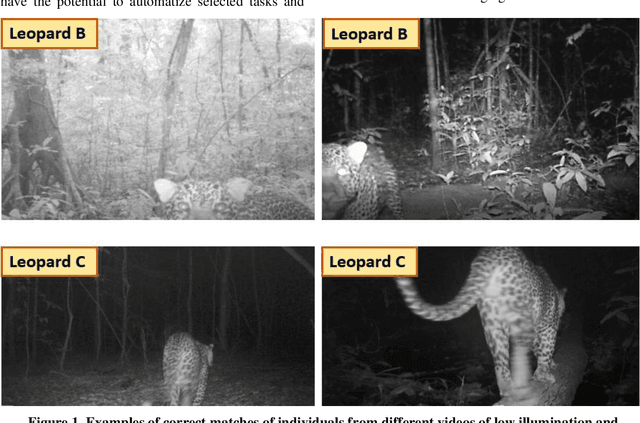
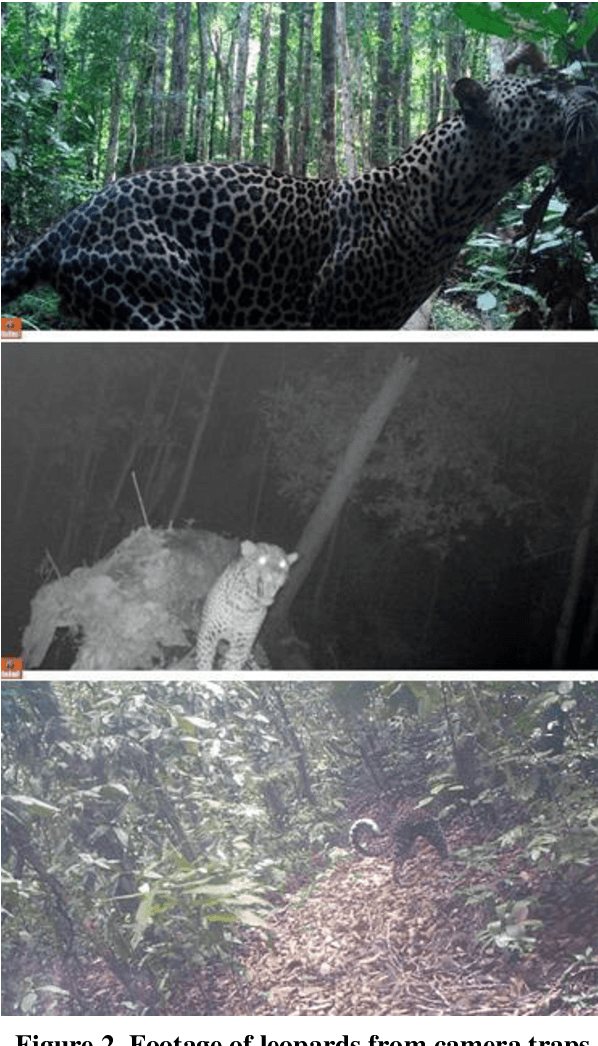
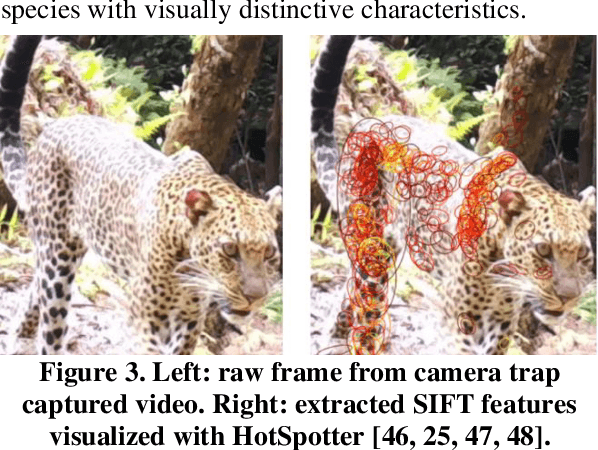
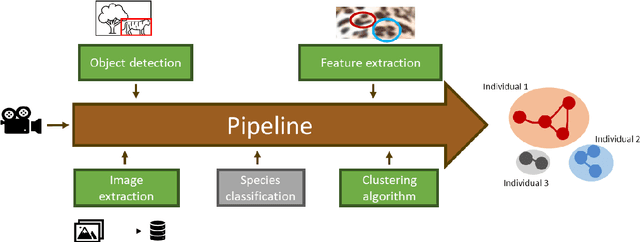
Abstract:The manual processing and analysis of videos from camera traps is time-consuming and includes several steps, ranging from the filtering of falsely triggered footage to identifying and re-identifying individuals. In this study, we developed a pipeline to automatically analyze videos from camera traps to identify individuals without requiring manual interaction. This pipeline applies to animal species with uniquely identifiable fur patterns and solitary behavior, such as leopards (Panthera pardus). We assumed that the same individual was seen throughout one triggered video sequence. With this assumption, multiple images could be assigned to an individual for the initial database filling without pre-labeling. The pipeline was based on well-established components from computer vision and deep learning, particularly convolutional neural networks (CNNs) and scale-invariant feature transform (SIFT) features. We augmented this basis by implementing additional components to substitute otherwise required human interactions. Based on the similarity between frames from the video material, clusters were formed that represented individuals bypassing the open set problem of the unknown total population. The pipeline was tested on a dataset of leopard videos collected by the Pan African Programme: The Cultured Chimpanzee (PanAf) and achieved a success rate of over 83% for correct matches between previously unknown individuals. The proposed pipeline can become a valuable tool for future conservation projects based on camera trap data, reducing the work of manual analysis for individual identification, when labeled data is unavailable.
 Add to Chrome
Add to Chrome Add to Firefox
Add to Firefox Add to Edge
Add to Edge